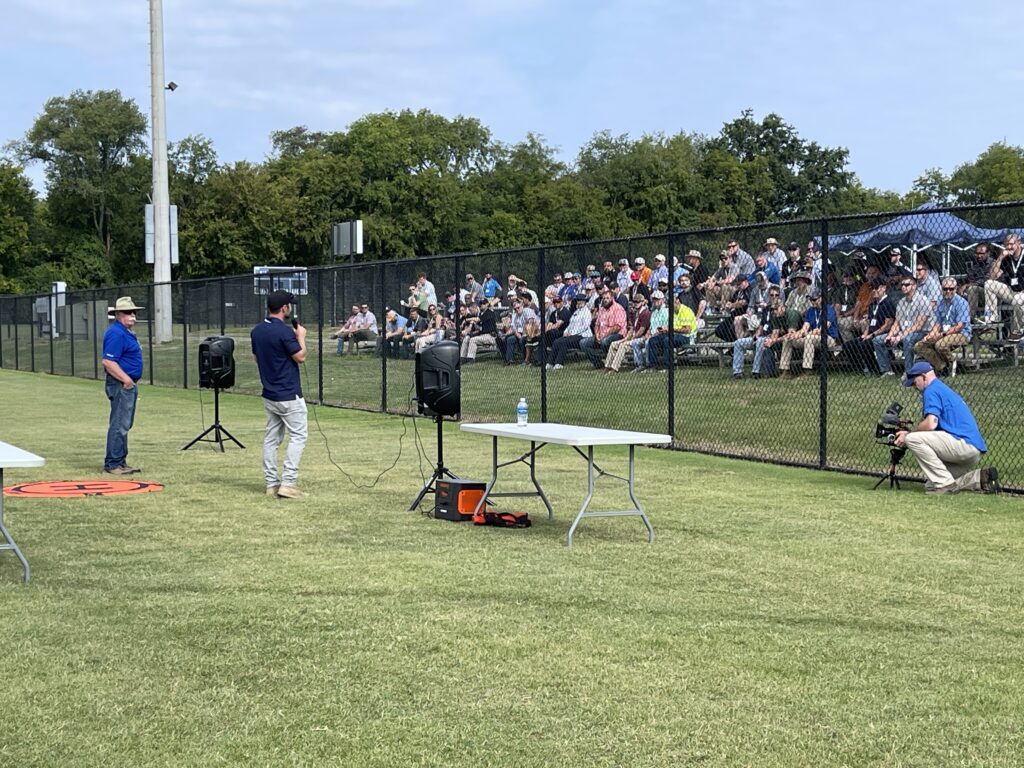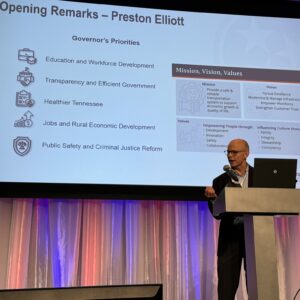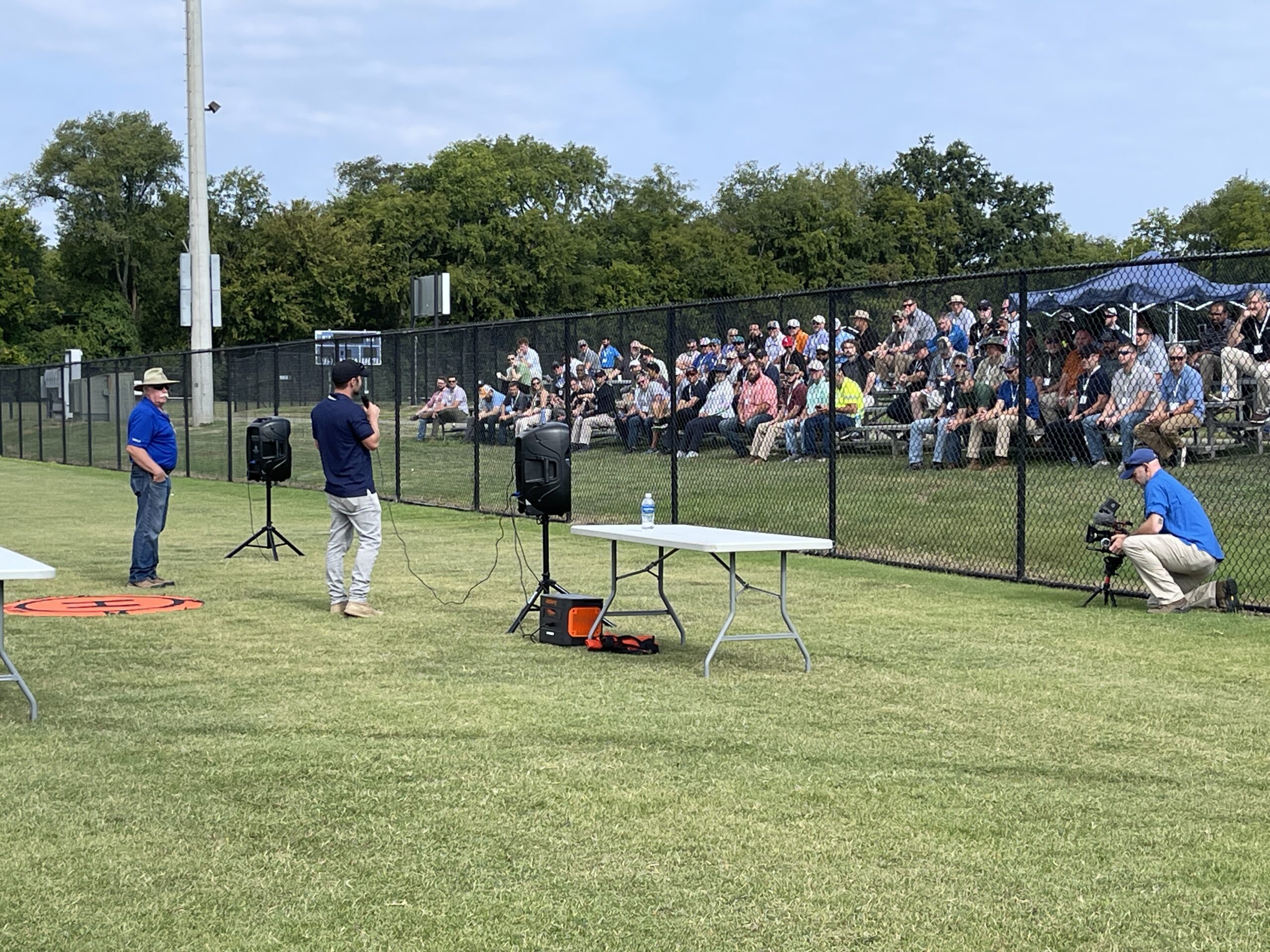Bringing Tennessee to the Forefront of Drone Innovation: A Recap of the State’s First Statewide Drone Symposium
by DRONELIFE Contributor T. Seth Ford
Tennessee held its first-ever statewide Drone Symposium on August 13-14, 2024, at Middle Tennessee State University (MTSU) in Murfreesboro, TN.


Collaborative efforts between the Tennessee Department of Transportation (TDOT) and MTSU’s Department of Aerospace began in earnest over a year and a half ago to bring together government, academic, and industry stakeholders to discuss relevant uncrewed aircraft system (UAS) topics specific to Tennesseans, whose state borders are shared with eight other States, the most in the country. This fact allows Tennessee to become the flagship state for showcasing interstate system interoperability design for joint emergency response operations from use cases stemming from Drones as First Responders (DFR) Programs and increased demand for beyond visual line-of-sight (BVLOS) drone capability. Twenty-nine speakers representing 46 agencies shared their expertise with over 300 attendees, many of them MTSU students, government staffers, and local industry leaders.

 The first day kicked off Tuesday morning amid warm August temperatures at MTSU’s Student Union with briefs from TDOT’s Aeronautics leadership team. Ryan Traversa, the State’s Advanced Air Mobility Manager, emceed the conference, which included presentations from Chief of Planning Deputy Commissioner Preston Elliott, Director of Aeronautics JP Saalwaechter, Aviation Manager Christopher Starr, and Aerial Survey & Geodetics Manager Brandon Webb.
The first day kicked off Tuesday morning amid warm August temperatures at MTSU’s Student Union with briefs from TDOT’s Aeronautics leadership team. Ryan Traversa, the State’s Advanced Air Mobility Manager, emceed the conference, which included presentations from Chief of Planning Deputy Commissioner Preston Elliott, Director of Aeronautics JP Saalwaechter, Aviation Manager Christopher Starr, and Aerial Survey & Geodetics Manager Brandon Webb.
Under ideal summer weather conditions, day two of the symposium focused on vendors, live flight demonstrations, static displays, and networking at MTSU’s Sports Complex. Vendors showcased emerging technologies within counter-UAS, detect and avoid (DAA), and flight management systems, among many others. As stakeholders intermingled, allowing new relationships to be created directly from the conference, everyone’s question at the end of the conference: when can we do this again?
Deputy Commissioner Elliott remarked, “I have seen more development in the last 15 years than my entire 30 years of public service. Innovation has increased substantially.” While innovation is exciting and provides hope for a better future, Elliott added in his closing statement that we must be careful with implementation. To be fair, comparative UAS industry statistics were not available 15 years ago, which truly supports just how nascent and fresh this industry is relative to established industries such as automobiles and telecommunications. According to industry insights from Statista, UAS innovation has substantially increased, reflected by worldwide drone revenue of $2.9B in 2018 to $4B in 2023, with revenue projections closer to $5B by 2030. The US continues to lead the worldwide market for drone usage and innovation.

 Specific topics of the Tennessee UAS symposium included sUAS National Airspace System integration, DFR Program implementation, NDAA 2024 compliance, Blue and Green UAS Program framing, Advanced Air Mobility (AAM)/Urban Air Mobility (UAM) Initiative updates, UAM architecture, and updates to the UAS Traffic Management (UTM). These topics were grouped under broader tracks and discussed in afternoon sessions by FAA officials from the Nashville Field Standards District Office (FSDO) and Federal Highway Administration (FHWA), closing out the first day’s activities.
Specific topics of the Tennessee UAS symposium included sUAS National Airspace System integration, DFR Program implementation, NDAA 2024 compliance, Blue and Green UAS Program framing, Advanced Air Mobility (AAM)/Urban Air Mobility (UAM) Initiative updates, UAM architecture, and updates to the UAS Traffic Management (UTM). These topics were grouped under broader tracks and discussed in afternoon sessions by FAA officials from the Nashville Field Standards District Office (FSDO) and Federal Highway Administration (FHWA), closing out the first day’s activities.
Many speakers commented directly on community involvement at the grassroots level. “We need to go out and talk about what’s going on with UAS to our local leaders and neighbors,” commented one speaker. “There’s a lot of misinformation and misunderstanding about drones. It’s time to change that.”
Infrastructure development and management were key takeaways, and rightfully so, due to the nature of uncrewed and autonomous systems relying on network communication and cloud-based services. However, the necessity for inter- and intra-state interoperability protocols for big data sharing cannot be overstated, according to Trevor Woods, Executive Director for the Northern Plain UAS Test Site in North Dakota. “Without data sharing protocols in place, state agencies will find it difficult to work efficiently on collaborative projects.”
MTSU’s Department of Aerospace, nationally ranked as one of the largest collegiate aviation programs, began its UAS operations undergraduate degree track in 2014 and subsequently solidified its position as an aviation leader, both statewide and regionally.
The conference was free for government and academic attendees, setting the stage for statewide stakeholder participation, ranging from MTSU graduates to angel investors, to meet and collaborate through a collective vision of a better tomorrow via emerging technology today.
References
Statista. (2024). https://www.statista.com/outlook/cmo/consumer-electronics/drones/worldwide#revenue
Read more:

 T. Seth Ford is a US Marine Corps combat veteran who flew attack helicopters and small drones in combat zones and assisted in small UAS testing and evaluation. Seth holds degrees, certificates, and licenses across multiple fields and disciplines and is currently seeking an MS in Uncrewed and Autonomous Systems at Embry-Riddle Aeronautical University. He is the founder and principal pilot of drone615.net in Nashville, TN.
T. Seth Ford is a US Marine Corps combat veteran who flew attack helicopters and small drones in combat zones and assisted in small UAS testing and evaluation. Seth holds degrees, certificates, and licenses across multiple fields and disciplines and is currently seeking an MS in Uncrewed and Autonomous Systems at Embry-Riddle Aeronautical University. He is the founder and principal pilot of drone615.net in Nashville, TN.
Miriam McNabb is the Editor-in-Chief of DRONELIFE and CEO of JobForDrones, a professional drone services marketplace, and a fascinated observer of the emerging drone industry and the regulatory environment for drones. Miriam has penned over 3,000 articles focused on the commercial drone space and is an international speaker and recognized figure in the industry. Miriam has a degree from the University of Chicago and over 20 years of experience in high tech sales and marketing for new technologies.
For drone industry consulting or writing, Email Miriam.
TWITTER:@spaldingbarker
Subscribe to DroneLife here.


